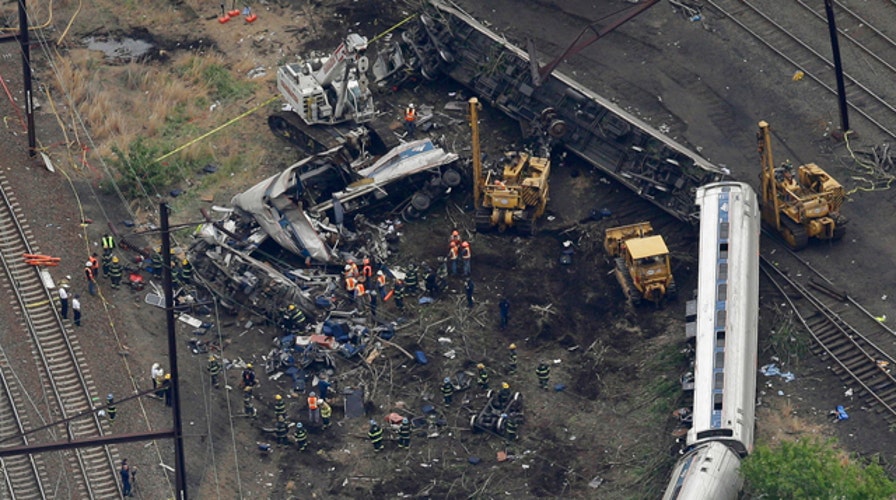Would 'positive train control' have stopped Amtrak tragedy?
Insight from John Hiatt, railroad investigator and former railroad engineer
Tuesday's Amtrak derailment near Philadelphia that has so far killed eight people and injured more than 200 others could have been avoided with the use of technology known as Positive Train Control (PTC). PTC is a GPS-based system that can automatically stop a train before an accident occurs, according to the Association of American Railroads. It uses GPS tracking to monitor a train’s location, braking a train if it reaches excessive speeds, enters a track where maintenance is being performed, or looks set to collide with another train.
Through the Rail Safety Improvement Act of 2008, Congress imposed a deadline on Amtrak and freight and commuter railroads to install the technology by the end of 2015. Today, most of these railroads are not expected to even meet the deadline, which has led to a proposal to give railroads a five-to-seven-year extension.
While the technology has been praised as potential life-saver, the slow implementation of PTC across the board has generated criticism.
“In theory, PTC would benefit rail carriers by increasing capacity and decreasing line-side signal assets and maintenance costs,” wrote Charles Banks, president of consulting firm RL Banks & Associates, in a blog post for The Eno Center for Transportation, a non-partisan think tank. “However, due to a way in which PTC is being implemented – partially the result of an unrealistically short federally mandated timeline – the benefits will be quite limited.”
Banks argued that a big flaw in the current implementation of the PTC system is that “railroads are adding complication and constraining PTC benefits by tethering it to decades old train control systems.”
Tuesday’s train derailment is certainly not the first of its kind. In 2013, a New York City Metro-North commuter train derailed in the Bronx the Sunday morning after Thanksgiving. The train engineer fell asleep and did not slow the train from its high 82 mph speed to the maximum of 30 mph as it headed to a curve.
During Tuesday’s Amtrak crash, the train’s data recorder revealed that the train had been speeding at 106 mph in an 80 mph zone right before it entered a curve with a speed limit of 50 mph.
The main appeal of PTC technology is that it could correct mistakes that often result from human error.
“I don’t think one man should be in control of a train by himself, with all that responsibility, with no safety net,” railroad investigator John Hiatt told Fox News Thursday.
Hiatt acknowledged that being a train conductor is a “grueling job” and that having one individual be responsible for the entire vehicle is a tremendous responsibility.
While it is impossible for railroads to immediately update what many view as severely outdated technology, Hiatt said there are some short term protocol changes that could reform the railroad system.
“The immediate fix might be to put a second person in the cab until they get this (PTC) implemented,” Hiatt said.
The Senate Commerce, Science and Transportation Committee approved a bill in March that would give the rail industry until 2020 to install the PTC technology. There is a provision to allow an additional two years if they think they need more time.
Ironically, Amtrak has been relatively proactive about installing the PTC technology. PTC is currently being used through much of the rail corridor between Boston and New York. Some lines in the Midwest also use the GPS technology.
“For decades we have seen preventable derailments and collisions occur. If we do no implement technology such as PTC to prevent these events, we will continue to see them for the foreseeable future,” former National Transportation Safety Board Chairman Deborah A.P. Hersman told the Associated Press.
Amtrak has not yet responded to a request for comment on this story.
The Associated Press contributed to this report.

